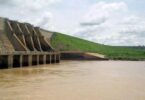The National Bureau of Statistics recently reported that Nigeria’s GDP grew by 3.19% year-on-year in real terms in the second quarter of 2024, surpassing the 2.51% growth recorded in the same period of 2023.
This growth, while still tepid, signals a resilient and adaptable economy, with certain sectors emerging as clear beneficiaries of President Bola Ahmed Tinubu’s economic policies since he took office.
Under Tinubu’s administration, some key sectors have demonstrated remarkable growth, suggesting that they may be capitalizing on the government’s policy shifts and strategic initiatives.
The Services sector led the charge, expanding by 3.79% and contributing 58.76% to the total GDP. Meanwhile, the Industry sector also rebounded strongly, growing by 3.53% after experiencing a decline of -1.94% in Q2 2023.
These ten fastest-growing sectors collectively contribute 29% of Nigeria’s GDP, with the telecommunications sector alone making up 16%, crude petroleum contributing 5.7%, and financial institutions accounting for 6%.
Below, we highlight these sectors in ascending order, showcasing the key drivers of the nation’s economic momentum despite ongoing macroeconomic challenges.
10. Transport Service
With a growth rate of 3.43% in Q2 2024, the transport services sector is gradually recovering and expanding its operations. This growth indicates a slow but steady rebound from previous downturns, supported by increased mobility, improved road networks, and a gradual uptick in economic activities.
However, the sector still faces challenges, including inadequate infrastructure, high maintenance costs, and logistical inefficiencies. Continued investment in infrastructure, modernization of fleet services, and better regulatory frameworks are essential to drive further growth and improve the overall efficiency of transport services in Nigeria.
9. Telecommunication
Growing at a rate of 5.17% in Q2 2024, the telecommunications sector continues to expand, driven by increased digital connectivity and rising demand for mobile and internet services.
This growth reflects the ongoing investments in network infrastructure, the rollout of advanced technologies like 4G and 5G, and the rapid adoption of digital services across Nigeria. Despite its steady expansion, the sector faces challenges such as high operating costs, regulatory issues, and the need for improved rural coverage to bridge the digital divide and ensure inclusive growth across all regions.
8. Electricity, Gas, Steam and Air Conditioning Supply
In Q2 2024, the Electricity, Gas, Steam, and Air Conditioning Supply sector grew by 5.96% in real terms, slightly down from 6.10% in Q2 2023. The sector contributed 1.56% to nominal GDP, a decrease from 1.70% in the same quarter last year but an increase from 0.41% in the previous quarter.
Despite these gains, the sector faced significant challenges, including frequent national grid collapses that disrupt power supply and impact economic activities. These outages hinder industrial productivity and reduce investor confidence, presenting a major obstacle to growth.
Additionally, ongoing issues with gas supply, such as insufficient domestic production and infrastructure limitations, create further complications. The reliance on imported gas and the volatility of global gas prices also add to the sector’s difficulties.
7. Water Supply, Sewerage, Waste Management and Remediation
The Water Supply, Sewerage, Waste Management, and Remediation sector grew by 8.20% year-on-year in Q2 2024, a decrease of 12.36 percentage points from the previous year, but up 1.25 percentage points from the prior quarter. Quarter-on-quarter growth was strong at 80.79%, contributing 0.44% to real GDP, slightly above the same quarter last year.
Never the less, challenges such as inadequate infrastructure, aging pipelines, and inconsistent service delivery, the sector managed to grow. However, issues like inefficient waste disposal and untreated sewage continue to pose significant environmental and public health risks in Nigeria.
6. Crude, Petroleum and Natural gas
Nigeria’s oil sector in Q2 2024, recorded a growth rate of 10.15% year-on-year, a turnaround from the -13.43% recorded in the same quarter of 2023, and an increase from the 5.70% growth seen in Q1 2024.
The sector contributed 5.70% to real GDP in Q2 2024, an improvement from the previous quarter’s 5.34% but a decrease from 6.38% in the same period last year.
Despite these gains, Nigeria’s oil sector continues to face substantial challenges. Key issues include frequent disruptions from oil theft and vandalism, which impact production levels and lead to significant financial losses. Aging infrastructure and inadequate maintenance also contribute to inefficiencies and operational problems.
5. Insurance
For Q2 2024, the Insurance sector saw a robust growth of 13.30% year-on-year, a significant increase from the 7.30% growth rate recorded in the same quarter of 2023. This impressive performance highlights a positive trend in the sector, showcasing its resilience and potential for expansion.
Yet, the sector continues to face significant challenges, particularly in terms of insurance penetration in Nigeria, which remains low at around 5%. This limited penetration reflects the broader issue of underdeveloped insurance markets and low public awareness about the benefits of insurance.
4. Financial Institutions
Nigeria’s Financial Institutions in Q2, 2024 grew by 30.37% in Q2, 2024 year on year, marking a decline from the 33.30% growth in Q1 2024 but an increase from 24.96% in Q2 2023. This growth highlights the sector’s resilience and expansion despite facing several challenges.
Key issues include a significant portion of the population lacking access to basic financial services, which limits financial inclusion and growth potential. The sector also contends with high non-performing loans, regulatory uncertainties, and macroeconomic instability, impacting financial stability and investor confidence. Additionally, infrastructure and technology gaps hinder the efficiency of financial services and the adoption of digital banking.
3. Water Transport







